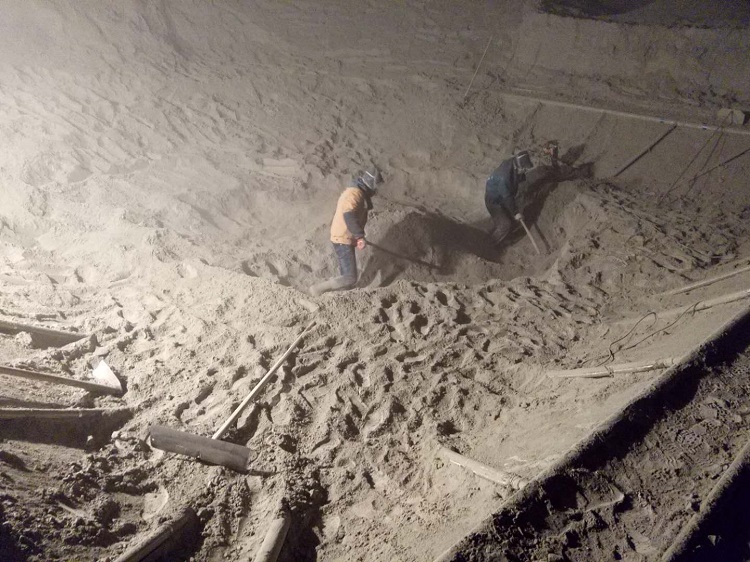What You Need to Know about Cement Silo Cleaning
Cement is an indispensable building material in construction projects. Cement silos are large containers used to store and transport cement, usually made of welded steel plates, with good sealing properties and corrosion resistance. However, in the long-term use process, cement silos will accumulate a lot of dust, impurities, caking, etc., which will not only affect the quality of cement but also may pose a serious threat to safety production. Therefore, regular cement silo cleaning is essential.The Importance of Cement Silo Cleaning
Clumps, dirt, and other contaminants in the cement silos can mix with the cement, and these impurities can affect the quality of the concrete poured. Impurities can also speed up the setting time of the cement, resulting in an early lack of concrete strength. On the other hand, dirty cement silos can be a safety hazard. Clogs and debris can cause the cement to spill, which can lead to injuries and damage to equipment. Dust and impurities in cement silos also increase the risk of fire and explosion. Especially in the dry season, the dust in the cement silo is easy to cause fire. In addition, the caked cement is prone to spark during the mixing process, leading to the occurrence of explosion accidents. If the cement silo is not cleaned for a long time, the dust and impurities inside will also have a corrosive effect on the steel plate, resulting in a reduction in the strength of the steel plate and affecting the service life of the cement silo.

Cement Silo Cleaning Procedures
Preparing
Before cleaning the cement silo, it is necessary to carry out preparatory work, including evaluating the cleaning work, clarifying the problems that may occur during the cleaning process, and developing appropriate safety procedures and operating procedures. At the same time, it is necessary to prepare the necessary tools, equipment, and human resources for the cleanup. These tools include vacuum cleaners, compressors, cranes, safety ropes, protective gear, and breathing apparatus.
Silo Cleaning
Clean up the debris on the surface of the cement silo, including cement dust, dust, weeds, garbage, etc. This debris can become attached to places such as walls, roofs, floors, and pipes. To clean up this debris can use tools, such as vacuum cleaners, electric brushes, compressors, etc., for some more difficult-to-clean debris, you can use cleaning agents. This step can be done using a variety of methods, including high-pressure water jet, steam cleaning, and chemical cleaning.
Flushing and Draining
Rinse the inner wall of the cement silo with clean water until it is clean. Ensure that all chemical cleaning agents are rinsed to avoid adverse effects on subsequent operations, for smaller cement depots, centrifugal pumps or carts are used for drainage, while for larger cement depots, a crane is needed to lift the pump into the cement depots for drainage.
Drying and Checking
Dry the inner wall of the cement bin naturally, or use equipment such as fans to speed up the drying process. After the cleaning is completed, carefully check whether the inner wall of the cement silo is clean and free of residue. If damage is found during inspection, it must be repaired before restocking. This will help prevent future problems and ensure that the silo is functioning properly.
Test Run
Start the cement silo and conduct a test run for a while. Observe whether there is any abnormal situation, such as water leakage, blockage, etc. After making sure it's safe, you can fill it with cement. Be sure to use the right amount of cement to avoid overfilling the silo.
Precautions for Cleaning Cement Silo
Choose the Right Cleaning Method
According to the actual situation of the cement silo, choose the appropriate cleaning method. For cement silos with less internal dust, mechanical cleaning can be used. For cement silos with more internal dust and serious caking, chemical cleaning can be used.
Ensure Safe Operation
When cleaning the cement silo, ensure the safety of the operator. Operators should wear protective equipment, such as protective glasses, gloves, etc. In addition, it is necessary to ensure the normal operation of the cleaning equipment to avoid safety accidents caused by equipment failure.
Pay Attention to Environmental Protection
Waste water, waste residue, and other pollutants generated in the cleaning process should be properly treated to avoid pollution to the environment. The wastewater can be treated and discharged, and the waste residue can be classified and recycled.
Periodic Inspection and Maintenance
The cleaned cement silos should be inspected and maintained. Check whether the cement silo inlet and outlet are smooth, whether there is residue inside, whether the sealing performance is good, and whether the steel plate is corroded. Problems should be dealt with and repaired in time.
Preliminary cleaning service
AGICO can provide you with pre-cleaning services. The purpose of the initial cleaning is to protect the facility and ensure the safety of cement storage. AGICO will rely on advanced technology, unique manufacturing methods, specialized equipment, and mechanized operation to build high-quality cement steel silos for customers at the lowest and most reasonable cost.
Previous:How To Choose A Sewage Storage Tank?
Get In Touch With
 Español
Español
